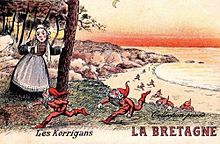인텔 터보 부스트
Intel Turbo Boost인텔 터보 부스트는 인텔의 중앙처리장치(CPU) 동적 주파수 스케일링 기능의 상표명으로 부하가 높은 태스크가 실행 중일 때 특정 버전의 동작 주파수가 자동으로 상승하므로 보다 높은 퍼포먼스가 실현됩니다.
빈도는 운영 체제가 프로세서의 최고 성능 상태를 요구하면 가속됩니다.프로세서의 퍼포먼스 상태는 모든 주요 운영체제에서 지원되는 오픈 스탠다드인 Advanced Configuration and Power Interface(ACPI) 사양에 따라 정의되며, 이 [1][failed verification]기술을 지원하기 위해 추가 소프트웨어나 드라이버가 필요하지 않습니다.터보 부스트의 배후에 있는 설계 개념은 일반적으로 "다이나믹 오버클럭"[2]이라고 불립니다.
프로세서의 워크로드에 의해 고속의 퍼포먼스가 요구되면 프로세서의 클럭은 필요에 따라 동작 주파수를 정기적으로 증가시킵니다.클럭 레이트의 증가는 프로세서의 전력, 전류 및 온도 제한, 현재 사용 중인 코어의 수 및 액티브 [1]코어의 최대 주파수에 의해 제한됩니다.
터보 부스트 대응 프로세서는 2008년 이후 제조된 Core i3, Core i5, Core i7, Core i9 및 Xeon[1] 시리즈로, 특히 Nehalem 및 이후 마이크로 아키텍처를 기반으로 [3]합니다.
CPU간 지원
주파수는 Nehalem 프로세서의 경우 133MHz, Sandy Bridge, Ivy Bridge, Haswell 및 Skylake 프로세서의 경우 100MHz씩 증가합니다.전기적 또는 열적 한계를 초과하면 프로세서가 설계 [1][4]한계 내에서 다시 작동할 때까지 동작 주파수는 133MHz 또는 100MHz씩 자동으로 감소합니다.Turbo Boost 2.0은 Sandy Bridge 마이크로아키텍처와 함께 2011년에 도입되었으며 Intel Turbo Boost Max 3.0은 Broadwell-E [1][5][6][7]마이크로아키텍처와 함께 2016년에 도입되었습니다.
터보 부스트 2.0의 특징은 프로세서가 몇 초간 더 높은 주파수로 확장할 수 있도록 전력 제한 수준이 다른 시간대를 도입했다는 것입니다.이러한 제한은 잠금 해제된 프로세서의 소프트웨어에서 구성할 수 있습니다.일부 메인보드 벤더는 인텔의 디폴트보다 높은 퍼포먼스를 의도적으로 사용하여 프로세서의 열설계전력(TDP)[8]을 초과하고 있습니다.
일부 인텔 Core X 프로세서 및 일부 최신 인텔 Core 프로세서 (10세대 데스크톱 Core i7)는 인텔 터보 부스트 맥스 3.0 테크놀로지를 지원합니다.새로운 버전의 Windows 10 및 Linux 커널은 인텔 Turbo Boost Max 3.0 [9]테크놀로지를 지원합니다.
역사
인텔의 2008년 11월의 화이트[10] 페이퍼에서는, 같은 [11]달에 발매된 Nehalem 베이스의 프로세서에 짜넣어진 신기능으로서 「터보 부스트」테크놀로지에 대해 설명하고 있습니다.
인텔 다이나믹 액셀러레이션(IDA)이라고 불리는 같은 기능은, 많은 Core 2 베이스의 Centrino [12]플랫폼에서 이용할 수 있었습니다.이 기능은 Turbo Boost에 제공되는 마케팅 처리를 받지 못했습니다.인텔(R) 다이내믹 액셀러레이션은 액티브 코어 수에 따라 코어 주파수를 동적으로 변경했습니다.OS가 Advanced Configuration and Power Interface(ACPI)를 사용하여 액티브코어 중 하나를 C3 sleeve 상태로 이행하도록 지시하면 다른 액티브코어는 더 높은 주파수로 동적으로 가속됩니다.
인텔 터보 부스트 테크놀로지 모니터는, GUI 유틸리티로서 터보 부스트의 감시에 사용할 수 있습니다.이 유틸리티는 2013년 2분기 이후에 출시된 인텔 프로세서를 지원하지 않게 되어, 사용이 [13]종료되었습니다.
「 」를 참조해 주세요.
레퍼런스
- ^ a b c d e "Intel Turbo Boost Technology 2.0". Intel.
- ^ Molka, Daniel; Daniel Hackenberg; Robert Schöne; Matthias S. Müller (September 2009). "Memory Performance and Cache Coherency Effects on an Intel Nehalem Multiprocessor System". 2009 18th International Conference on Parallel Architectures and Compilation Techniques. 18th International Conference on Parallel Architectures and Compilation Techniques. pp. 261–270. doi:10.1109/PACT.2009.22. ISBN 978-0-7695-3771-9.
[...] processors based on the Nehalem microarchitecture feature a dynamic overclocking mechanism (Intel Turbo Boost Technology) that allows the processor to raise core frequencies as long as the thermal limit is not exceeded.
- ^ "Intel Broadwell-E HEDT Core i7 Processors Launching on 30th May - Official Prices and Specifications Confirmed". 27 May 2016. Retrieved 28 June 2016.
- ^ "Intel Xeon Processor E5 v3 Product Family: Processor Specification Update" (PDF). Intel. November 2014. pp. 8–11. Retrieved December 2, 2014.
- ^ "Download Intel® Turbo Boost Max Technology 3.0". DownloadCenter.Intel.com. 2016-10-22. Archived from the original on 2018-10-19. Retrieved 2017-04-01.
- ^ "Power management architecture of the 2nd generation Intel Core microarchitecture, formerly codenamed Sandy Bridge" (PDF). Hotchips.org. Retrieved 2017-04-01.
- ^ Angelini, Chris (2011-01-02). "The System Agent And Turbo Boost 2.0". Tom's Hardware.
- ^ Cutress, Ian. "Why Intel Processors Draw More Power Than Expected: TDP and Turbo Explained". AnandTech.
- ^ "Frequently Asked Questions about Intel Turbo Boost Max Technology 3.0". Intel.com. Intel. Retrieved 2020-06-16.
- ^ "Intel Turbo Boost Technology in Intel Core Microarchitecture (Nehalem) Based Processors" (PDF). Intel Corporation. November 2008. p. 5. Retrieved 2015-05-07.
Intel Core Microarchitecture (Nehalem) based processors incorporate a new feature: Intel Turbo Boost technology.
- ^ "Intel Launches Fastest Processor on the Planet" (Press release). Intel. 2008-11-17. Retrieved 2010-05-13.
Intel Corporation introduced its most advanced desktop processor ever, the Intel Core i7 processor. The Core i7 processor is the first member of a new family of Nehalem processor designs [....]
- ^ "Tech ARP - Where the best in technology gather - Tech ARP". Tech ARP. 19 December 2015. Archived from the original on 21 July 2011.
- ^ "Intel Turbo Boost Technology Monitor Does Not Support 4th Generation Processors". intel.com. Retrieved 22 February 2015.
외부 링크
- 인텔 터보 부스트 테크놀로지 2.0
- 터보 부스트를 그래픽으로 표시하는 인텔 프로그램
- 인텔 ® 터보 부스트 테크놀로지 모니터 개요
- Linux용 Turbo Boost 보고서 도구
- James Charles, Preet Jassi, Ananth Narayan S, Abbas Sadat 및 Alexandra Fedorova의 인텔 Core i7 터보 부스트 기능 평가


